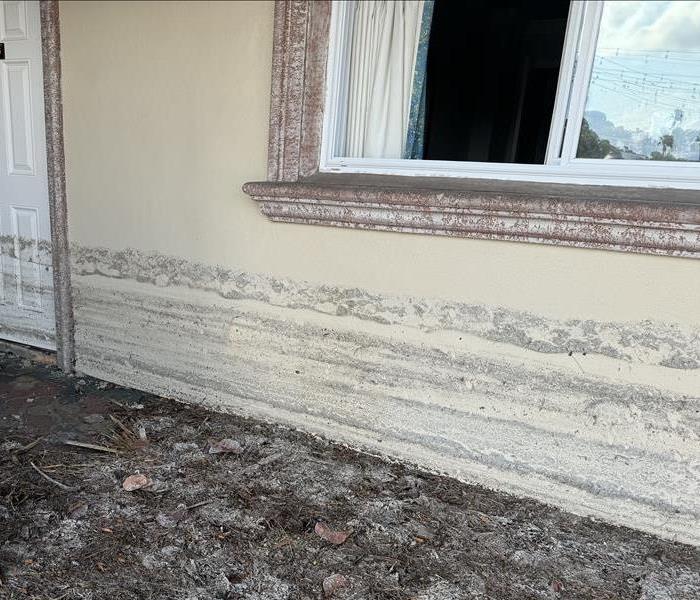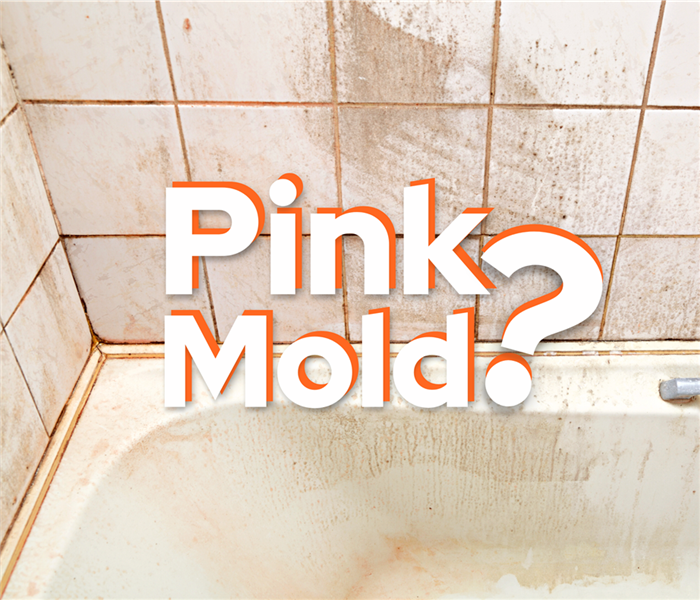Archived Mold Remediation Blog Posts
Safe Mold Cleaning Products for Your Home
11/13/2024 (Permalink)
 Keeping mold at bay starts with using the right products and maintaining a moisture-free environment.
Keeping mold at bay starts with using the right products and maintaining a moisture-free environment.
Mold can be a persistent problem in homes, especially in humid climates like Altamonte Springs. While professional mold remediation services are often necessary for significant outbreaks, small patches of mold can sometimes be handled with safe and effective DIY methods. Knowing which mold cleaning products to use is crucial to avoid damage to your home and ensure that mold doesn’t return. In this blog, we’ll dive into expert insights on the safest mold cleaning products for your home.
Why Mold Cleaning Products Matter
The U.S. Environmental Protection Agency (EPA) emphasizes that mold can thrive in areas with excess moisture, and it is crucial to address both the mold and the source of the moisture to prevent further growth. The right mold cleaning products will not only clean the mold but also inhibit its return. Here are some safe and effective options for homeowners.
Safe Mold Cleaning Products for DIY Use
- White Vinegar White vinegar is one of the most popular and safest mold cleaning products. It is highly effective against most molds and prevents mold spores from regrowing. To use vinegar, simply spray undiluted white vinegar onto the affected area and let it sit for at least an hour before wiping it off.
- Baking Soda Known for its natural cleaning properties, baking soda is a gentle but effective option for cleaning mold. Mix one teaspoon of baking soda with two cups of water and use this mixture to scrub moldy surfaces. Not only does it clean, but it also absorbs moisture, helping to prevent future mold growth.
- Hydrogen Peroxide Hydrogen peroxide is an excellent mold killer and works well on surfaces like tile and grout. Use a 3% solution, spray it directly on the moldy area, and leave it for about 10 minutes before scrubbing.
- Tea Tree Oil This natural fungicide is highly effective at killing mold. Mix one teaspoon of tea tree oil with one cup of water, spray it on the moldy area, and leave it without rinsing. Its antimicrobial properties also help deter future mold growth.
Mold-Resistant Products to Prevent Future Growth
In addition to these cleaning solutions, it’s helpful to incorporate mold-resistant materials into your home, such as mold-resistant paint or drywall, especially in moisture-prone areas. According to the EPA, using these products significantly reduces the chances of mold taking hold after cleaning.
Keep Your Home Mold-Free
By using safe, effective mold cleaning products like white vinegar and hydrogen peroxide, you can tackle minor mold outbreaks in your home. For larger infestations or stubborn mold, be sure to contact SERVPRO® of Altamonte Springs for expert mold remediation services. Keeping mold at bay starts with using the right products and maintaining a moisture-free environment
Mold in Rental Properties: Tenant and Landlord Responsibilities
7/17/2024 (Permalink)
Mold in rental properties is a concern that both tenants and landlords need to address promptly to maintain a safe and comfortable living environment. Understanding the responsibilities of each party can help in preventing mold growth and ensuring timely remediation when it does occur. In this blog post, we will outline the key responsibilities of both tenants and landlords regarding mold in rental properties.
Tenant Responsibilities
Reporting Mold Issues Promptly
As a tenant, your first responsibility is to report any signs of mold to your landlord or property manager immediately. Early detection and communication are crucial in preventing the spread of mold. Look for common signs such as discoloration on walls, ceilings, or floors, and a musty odor.
Maintaining Cleanliness and Ventilation
Tenants play a vital role in preventing mold growth by maintaining cleanliness and proper ventilation in their living spaces. Regular cleaning, especially in moisture-prone areas like bathrooms and kitchens, can help prevent mold. Ensure that exhaust fans are used during and after showering and cooking to reduce humidity levels. Additionally, avoid blocking air vents and keep windows open when weather permits to promote air circulation.
Addressing Minor Leaks and Moisture
If you notice any minor leaks or condensation, it’s important to address them immediately. Wipe down any moisture and notify your landlord if repairs are needed. Simple actions like using a dehumidifier and ensuring that water doesn’t accumulate in basements or other damp areas can also be effective in controlling moisture levels.
Landlord Responsibilities
Conducting Regular Inspections
Landlords are responsible for conducting regular inspections of their rental properties to identify potential mold issues. These inspections should include checking for water leaks, condensation, and adequate ventilation systems. Regular maintenance can prevent minor issues from escalating into significant mold problems.
Repairing Leaks and Water Damage
Promptly repairing any leaks or water damage is one of the most critical responsibilities of a landlord. This includes fixing leaky roofs, plumbing issues, and any other sources of water intrusion. Addressing these problems quickly can prevent mold from developing and spreading throughout the property.
Providing Adequate Ventilation and Dehumidification
Landlords should ensure that their rental properties have adequate ventilation systems in place, including functioning exhaust fans in bathrooms and kitchens. In areas with high humidity levels, providing dehumidifiers can help control moisture and reduce the risk of mold growth.
Educating Tenants
Educating tenants about mold prevention and their responsibilities is another important task for landlords. Providing tenants with information on how to prevent mold, recognize its early signs, and the importance of reporting issues promptly can foster a collaborative approach to mold prevention and control.
Working Together
Effective communication between tenants and landlords is essential in managing mold in rental properties. Tenants should feel comfortable reporting mold issues without fear of retaliation, and landlords should respond to these reports promptly and professionally. By working together, both parties can maintain a mold-free living environment and ensure the property remains in good condition.
At SERVPRO®, we understand the importance of addressing mold issues promptly and effectively. Our team of experts is here to assist with mold inspection, remediation, and prevention strategies to keep your rental property safe and comfortable. If you need professional help, don’t hesitate to contact us.
By following these guidelines, tenants and landlords can work together to prevent and address mold issues, ensuring a healthy living environment for all.
Pink Residue: Understanding and Preventing the Fungal Menace in Your Bathroom
3/9/2023 (Permalink)
 pink-colored grime is actually a result of a specific type of mold called serratia marcescens
pink-colored grime is actually a result of a specific type of mold called serratia marcescens
As a homeowner, you have an endless list of projects to manage. You step into the shower and notice the once-white grout on the floor is now a shade of pink. Over time, the inside of your shower curtain and tub ledges tell the same story. You might think that the pink color is a result of neglect and lack of proper cleaning, but the truth is that the pink-colored grime is actually a result of a specific type of mold called serratia marcescens.
Understanding Where Pink Mold Grows
Serratia marcescens thrives in damp, warm environments such as bathrooms and kitchens. This type of mold is known for its pink, red, or orange color, which can make it easy to spot. It can grow on a variety of surfaces, including tile, grout, silicone, and other materials commonly found in bathrooms. It can also form on surfaces that are frequently exposed to water, such as shower curtains, bath mats, and other bathroom fixtures. The mold can also be found in the drain area where water and soap scum accumulate.
Preventing Pink Mold Growth
This type of mold can produce an unpleasant musty odor and can aggravate allergies and asthma symptoms. It is crucial to clean and sanitize your bathroom regularly to prevent the growth of serratia marcescens and other types of mold. This includes cleaning the tub, shower, and sink, as well as other fixtures that are exposed to water. If you notice any mold in your bathroom, it is important to address the issue as soon as possible.
At-Home Remedies
Mold can be a common problem in homes, particularly in areas that are damp or have poor ventilation. While it is important to address the root cause of mold growth, such as fixing leaks or improving ventilation, there are several at-home ways to effectively reduce small amounts of mold. Remember to wear protective gear, such as gloves and a mask, when cleaning. For spot-treatment, try:
- Vinegar: Mix equal parts white vinegar and water and spray the solution onto the affected area. Let it sit for several hours before scrubbing with a brush and wiping clean.
- Baking Soda: Mix 1/4 tablespoon of baking soda with water to make a paste, then apply it to the affected area. Let it sit for several hours before scrubbing with a brush and wiping clean.
- Hydrogen Peroxide: Mix 1 part hydrogen peroxide with 2 parts water and spray the solution onto the affected area. Let it sit for several minutes before scrubbing with a brush and wiping clean.
- Tea Tree Oil: Mix 1 teaspoon of tea tree oil with 1 cup of water and spray the solution onto the affected area. Let it sit for several hours before scrubbing with a brush and wiping clean.
While these at-home remedies can be helpful for small spot-treating, larger or more severe cases require professional intervention.
Trusting the Professionals at SERVPRO
SERVPRO of Altamonte Springs/Longwood, a professional cleaning and restoration company, can help homeowners address mold and other issues in your home. Their trained technicians use advanced equipment and techniques to safely and effectively remove mold and prevent it from returning.
They can also provide a range of services such as cleaning, sanitizing, and deodorizing to keep your home looking and smelling fresh. Don't let mold take over your home. Trust the experts at SERVPRO Team Nicholson to get the job done right and give you peace of mind. With their help, you can enjoy your clean and fresh-smelling shower once again.
 Keeping mold at bay starts with using the right products and maintaining a moisture-free environment.
Keeping mold at bay starts with using the right products and maintaining a moisture-free environment.



 24/7 Emergency Service
24/7 Emergency Service
